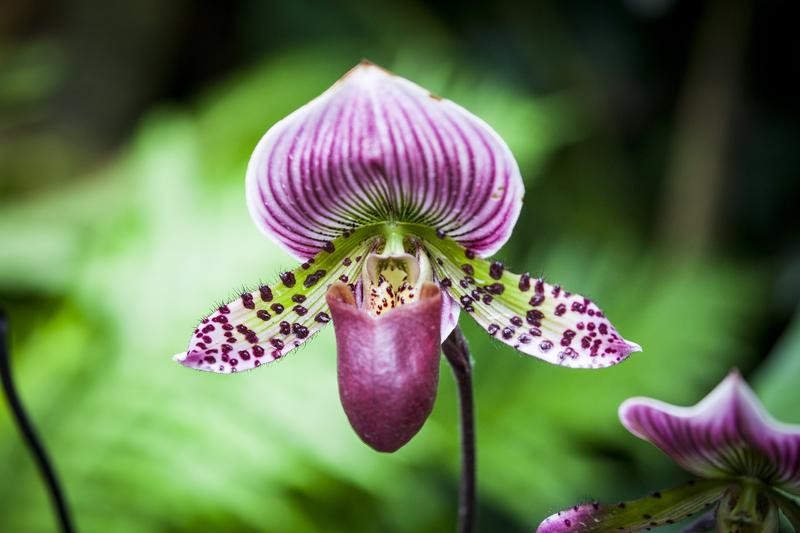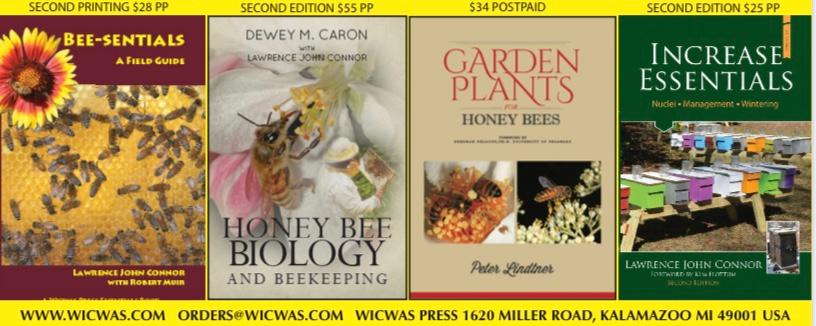Intoxicating, Putrid and Sexy: How Orchid Pheromones Attract Pollinators
By: Jessica Sherburne
 PIXABAY
PIXABAY
Nectarless orchids are masters of mimicry and can appear and smell identical to other nectar-rich orchids. Thus, they draw pollinators into their flower, and then the forced pollination begins. Certain orchids shoot sticky balls of pollen at their pollinators. Others are known to intoxicate the pollinators so that they fall into a chamber inside, and in taking the path out, they become covered in pollen.
Strolling through the grasslands or mountains of Montana during almost any time of year, you’re sure to be rewarded with the beauty and aroma of wildflowers. The bright colors attract your attention, and the airy fragrance lures you closer for another whiff. This is the very same advertising that attracts many pollinators. In their case, though, the bright colors and smells are the promise of a meal of nectar.
One group of plants, orchids, has a fascinating diversity of ways of attracting birds and bees to pollinate them.
Orchids are the second most widely-distributed family of plants after grasses, and they occur in almost every major ecosystem. Some species of orchids live on the tundra north of the Arctic Circle. Two Australian species grow underground; only the flower will poke above the ground for a brief period.
Orchids also come in a large range of sizes and colors. The largest orchid in the world can grow up to 25 feet high, with leaves that are two and a half feet long. The smallest orchid is the size of President Roosevelt’s nose on a U.S. dime.
Normally, flowers pay their pollinators a reward of nectar in exchange for transferring pollen to others of their type.
But surprisingly, not all orchids smell sweet. Some produce the putrid smell of rotting flesh – not a flower you would want as a centerpiece on your dining room table. These species of orchids specialize in attracting flies or beetles that are attracted to carrion.
It’s recently been found that about a third of the 30,000 orchid species in the world are deceptors. This means that they give the appearance of having nectar, but in reality, have none. By not producing nectar, the orchid has spare energy that it uses for other functions, such as growth and production of seeds. Nectarless orchids are masters of mimicry and can appear and smell identical to other nectar-rich orchids. Thus, they draw pollinators into their flower and then the forced pollination begins.
Certain orchids shoot sticky balls of pollen at their pollinators. Others are known to intoxicate the pollinators so that they fall into a chamber inside, and in taking the path out, they become covered in pollen.
Other species of nectarless orchids have developed particularly devious ways to attract pollinators. Their flowers resemble female wasps, and they even emit a potent chemical that mimics the sex pheromone of the female wasp.
These orchids draw in male wasps looking for a mate. While they attempt to copulate with the orchid flower, the lovelorn male wasp becomes covered with pollen. After a while of unrequited love, he flies off. And if he’s duped by another orchid flower, he transfers pollen to his new object of affection and thus pollinates that orchid.
So the next time you stroll through the woods and are attracted to a flower because of its bright colors and fragrant aroma, take a closer look. If it’s an orchid that has drawn your attention, remember that it may have some tricks to draw in pollinators.
“Field Notes” is produced by the Montana Natural History Center.
________________________________________________________________________________







